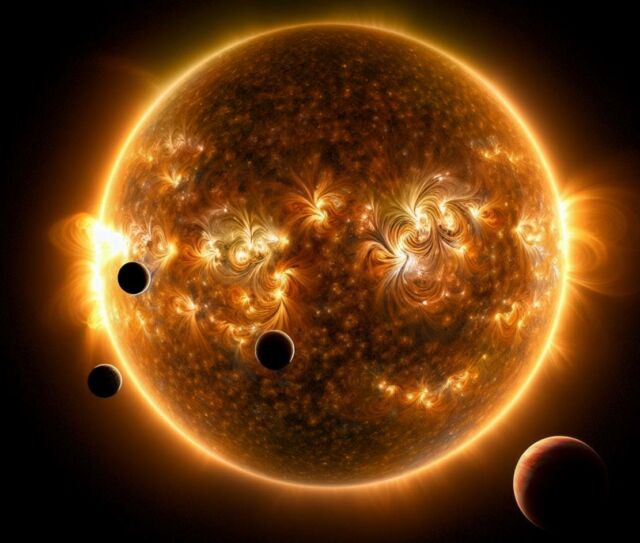 Artist rendering of the TOI-1136 system and its young star flaring. (Rae Holcomb/Paul Robertson/UCI)
Artist rendering of the TOI-1136 system and its young star flaring. (Rae Holcomb/Paul Robertson/UCI)
Six-exoplanet system was discovered around a newly formed star, located more than 270 light-years away.
Scientists have uncovered a unique multi-planet star system using advanced technology. This system, known as TOI-1136, features a dwarf star located more than 270 light-years away in the Milky Way galaxy. Despite its distance, it’s considered nearby given the galaxy’s vast size (100,000 light-years in diameter).
Six planets have been confirmed to orbit the star, and researchers suspect there may be a seventh.
Recently published in The Astronomical Journal, the study provides precise details about the planets’ masses, orbital shapes, and atmospheric characteristics. These findings build upon initial observations made in 2019 using data from the Transiting Exoplanet Survey Satellite (TESS).
Stephen Kane, a planetary astrophysics professor at UC Riverside and the principal investigator of the TESS Keck Survey, highlights the system’s uniqueness. One distinguishing factor is its age; at just 700 million years old, TOI-1136 is significantly younger than our solar system, which is 4.5 billion years old.
Tara Fetherolf, visiting assistant professor of astrophysics at Cal State San Marcos and co-author of a new paper about the system, said:
“Because few star systems have as many planets as this one does, it’s getting close in size to our own solar system. It’s both similar enough and different enough that we can learn a lot.
This gives us a look at planets right after they’ve formed, and solar system formation is a hot topic. Any time we find a multi-planet system it gives us more information to inform our theories about how systems come to be and how our system got here.”
All the planets are of a similar age in the system and formed under similar conditions.
To gather detailed information, researchers utilized the Automated Planet Finder telescope at the Lick Observatory in California and the High-Resolution Echelle Spectrometer at the W.M. Keck Observatory in Hawaii. By detecting slight variations in stellar motion, they achieved an unprecedented level of precision in determining the planets’ masses.
source University of California, Riverside





Leave A Comment